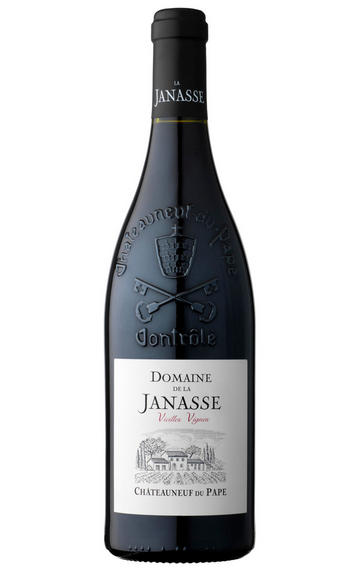
2015 Châteauneuf-du-Pape, Vieilles Vignes, Domaine de la Janasse, Rhône
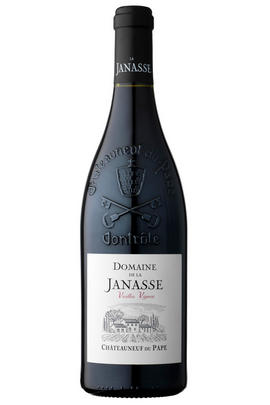
Critics reviews
The 2015 Chateauneuf du Pape Cuvee Vieilles Vignes is a tour de force. Raspberry and apricot-scented fruit, rich chocolate notes and an incredible whirlwind of spice are delivered in this full-bodied wine that shows no heat, just waves of flavor. It should drink well for 20 years or more.
Joe Czerwinski, Wine Advocate (October 2017)
About this WINE
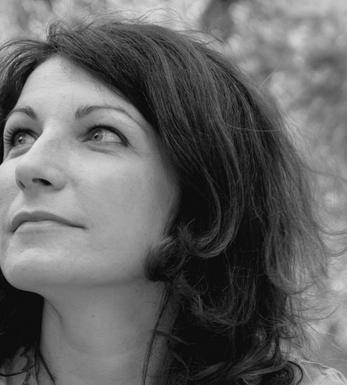
Domaine de la Janasse
Brother-and-sister team Christophe and Isabelle Sabon continue to work wonders at Janasse – a domaine founded by their father, Aimé Sabon, in 1973. They now farm around 90 hectares, 18 of which are in Châteauneuf-du-Pape. These are dotted across numerous plots in the northeast of the appellation, in the commune of Courthézon, where the soils are more sandy and therefore much cooler. They also have a few parcels on the famous, clay soil plateau of La Crau. The grapes are largely de-stemmed; concrete tanks are used for the Grenache and old oak for the Syrah and Mourvèdre. In other words, everything is fairly traditional. While they have been farming largely in accordance with organic principles for years, they are now undergoing full conversion to organic and expect to gain certification in 2024.
The domaine sadly suffered terribly from frost in 2021, reducing their output by 45% (and up to 80% for their Vin de Pays wines) – it is the siblings’ smallest vintage yet. They are however pleased with the quality, and they highlight its concentration and freshness.
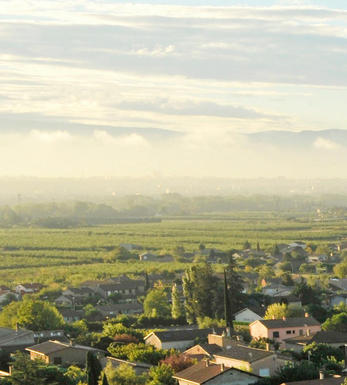
Châteauneuf-du-Pape
The most celebrated village of the Southern Rhône, Châteauneuf-du-Pape is the birthplace of the now indispensable French Appellation d’Origine Contrôlée system – imperfect though it may be. Compared to the Northern Rhône, the vineyards here are relatively flat and often feature the iconic galet pebbles – the precise benefits of which are a source of much debate. Minimum alcohol levels required by the AOC are the highest in France, but at 12.5% it is well below the natural generosity of Grenache, which only achieves its full aromatic potential when it is fully ripe and laden with the resultant high sugars. Syrah and Mourvèdre contribute the other defining elements in the blend, adding pepper, savoury spice and structure to the decadent Grenache. There are a further 10 permitted red grape varieties which can be used to adjust the “seasoning”. Of the five white varieties permitted, it is Grenache Noir’s sibling – predictably perhaps – Grenache Blanc, which dominates, though Roussanne shows a great deal of promise when handled well, notably at Château de Beaucastel.
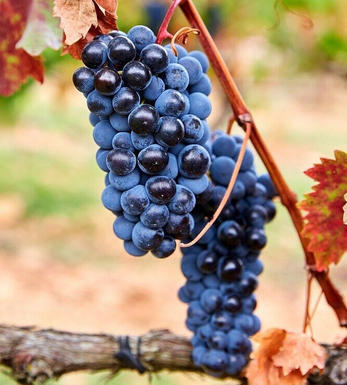
Southern Rhône Blend
The vast majority of wines from the Southern Rhône are blends. There are 5 main black varieties, although others are used and the most famous wine of the region, Châteauneuf du Pape, can be made from as many as 13 different varieties. Grenache is the most important grape in the southern Rhône - it contributes alcohol, warmth and gentle juicy fruit and is an ideal base wine in the blend. Plantings of Syrah in the southern Rhône have risen dramatically in the last decade and it is an increasingly important component in blends. It rarely attains the heights that it does in the North but adds colour, backbone, tannins and soft ripe fruit to the blend.
The much-maligned Carignan has been on the retreat recently but is still included in many blends - the best old vines can add colour, body and spicy fruits. Cinsault is also backtracking but, if yields are restricted, can produce moderately well-coloured wines adding pleasant-light fruit to red and rosé blends. Finally, Mourvèdre, a grape from Bandol on the Mediterranean coast, has recently become an increasingly significant component of Southern Rhône blends - it often struggles to ripen fully but can add acidity, ripe spicy berry fruits and hints of tobacco to blends.


Buying options
Add to wishlist
Description
This is one of the great wines of Châteauneuf-du-Pape. The old vines in question are located over four different plots and four different soil types. Sand, clay, galet and limestone all work together, with over 40 percent of the vines predating 1940. Beguilingly simple winemaking (concrete tank and foudre) does not get in the way of inherent complexity. Christophe waxes lyrical for some time and then, with a gentle smile, suggests accompanying this wine with jugged hare in 12 years’ time. Quite right.
Drink 2022 - 2030+
Berry Bros. & Rudd
wine at a glance
Delivery and quality guarantee